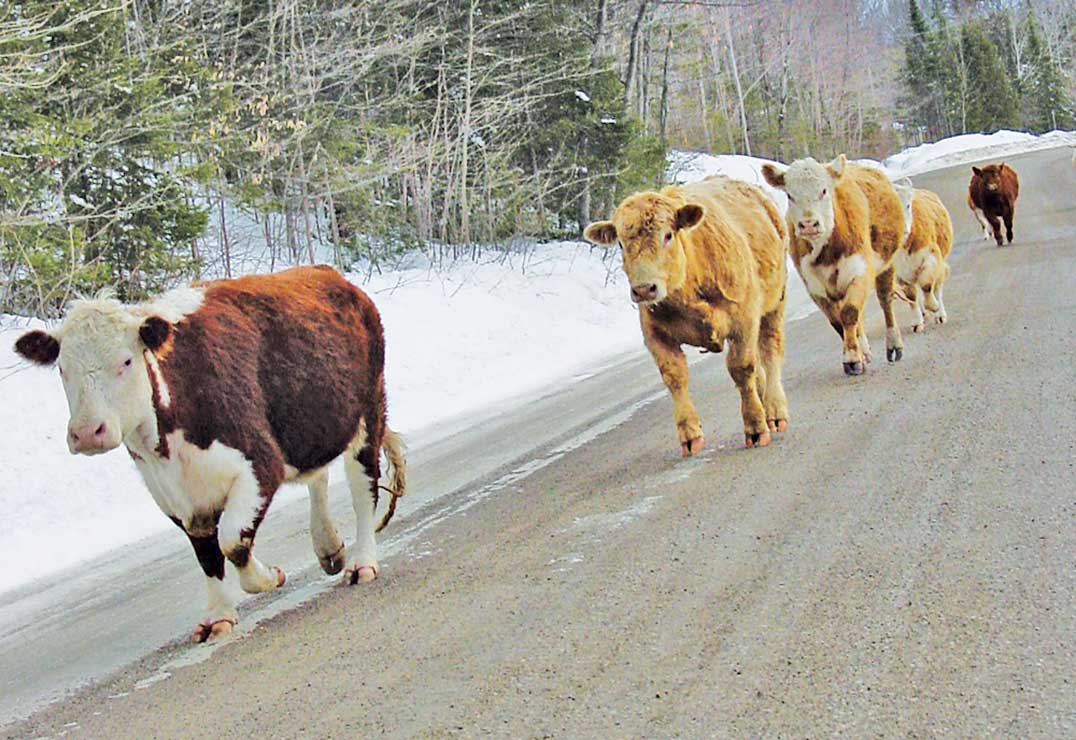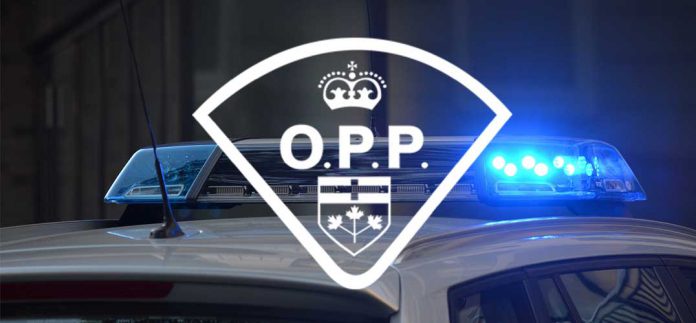LITTLE CURRENT—Manitoulin beef and dairy farmer Bud Wilkin has been working with large animals for much of his life and, at age 84, he has certainly racked up an impressive amount of experience—but even he has found himself on the wrong end of an angry bovine much to his dismay, and not a little bit of pain.
“It was a couple of years ago,” recalled Mr. Wilkin. “You have got to be very careful. Too often you get busy and that’s when you can find yourself in a bit of trouble.”
The cow in question had been a bit of a handful, but on this occasion she was one very angry mom. “She came at us pretty severely, you get one like that every now and then. But we survived it and are the wiser for it.”
Just getting around in the cattle yard can be chancy this time of year. Mr. Wilkin has had a hip replacement and finds he goes a little slower these days. “It is very tricky,” he said. “There is a lot of ice and a lot of snow with a crust of ice.”
Mr. Wilkin raises beef cattle, around 65 head, and milks 35 cows, but he is one of a dwindling number these days. “There were about 38 dairy producers when we started,” he said. “Now we are one of only three.” But Mr. Wilkin said that he has no intention of stopping yet. “I can’t do things as quickly as I used to,” he said. “But as long as I am of some help I will keep at it.”
When it comes to safety around dairy and beef cattle there are a number of strategies that have helped reduce injuries.
The Successful Farming website has some great tips from animal scientist and handling expert Dr. Ron Lemenager of Purdue University.
One concept is to reduce shadows, colour contrasts and noise. Cattle have been prey for much of their evolution, they want to take flight when they can’t see what’s ahead. Shadows and odd colour patterns can confuse and stop them. When working a chute, consider the sun angles and light sources. Reduce shadows by putting solid sides on chutes and crowd pens. Artificial light directly overhead will also help produce fewer shadows. Since cattle also balk at noises, reduce the clamour from dangling chains or rattling head gates.

Always remember that when working with cattle in an open pen or pasture paddock, their blind spot is directly behind. They won’t respond to commands or arm signals if you are in that location. Try to work to the side, about 30 degrees to 35 degrees off of straight behind. This is a point of balance from where cattle are more likely to respond to your signals.
It is best to have at least two holding pens with a gate between them that lets you easily sort cows from calves and take a look at locking head gate designs: straight neck bars, curved bars, scissors and full opening, or even a swinging saloon-door design—all of these can work, but all also have disadvantages, say the experts. Look for a design that securely locks the bars on an animal’s neck with a positive engagement latch and notch locks that can’t slip.
Consider adding a brisket bar, a cow palpation gate and palpation cage protection for pregnancy checks. The brisket bar keeps the cow from going down on her front knees. You want a side door to get in the chute behind her and you must be shielded from the next cow in line.
Prevent turning by making sure working alleys and chutes are ideally 18 inches wide for calves and 30 inches wide for cows. The walls should be five feet tall and sturdy enough to contain the biggest cows in the herd.
Consider a Bud Box to prevent cattle from going back in the direction from which they came. This is a holding pen that leads into the working chute around 12 by 20 feet in dimensions. The entry gate is placed next to the chute entrance so when the cow attempts to go back through the same gate they entered, they funnel into the chute.
Many of these ideas leverage the cow’s natural instincts.
Ensure your calving pens have enough room to maneuver a calf jack (a long and cumbersome tool for moving calves). Create some wide spaces or side panels that easily move to allow for the jack.
Make sure there is traction on the concrete floors of chutes and working pens. Dr. Lemenager suggests a severe broom finish on the concrete isn’t adequate. Bolting wood strips or rebar to the floor, with openings wide enough for their feet, can help modify a smooth concrete floor.
Put gates in the direction you want cattle to move in a paddock, with alleyways to connect pastures and paddocks—so if you usually move cattle in a northerly direction through alleyways, put your gates in the north corners of the paddocks. As creatures of habit, the pathways will become routine to the cows.
Gates into paddocks should be a full 16 feet wide, rather than 12, and alleyways should measure 20 to 30 feet wide.
Finally, make it easy for your animals to slake their thirst. A thirsty cow is not a happy cow.
There are, of course, many other ways to increase safety on the farm, these are just a few ideas that can help reduce risks while dealing with large animals.





